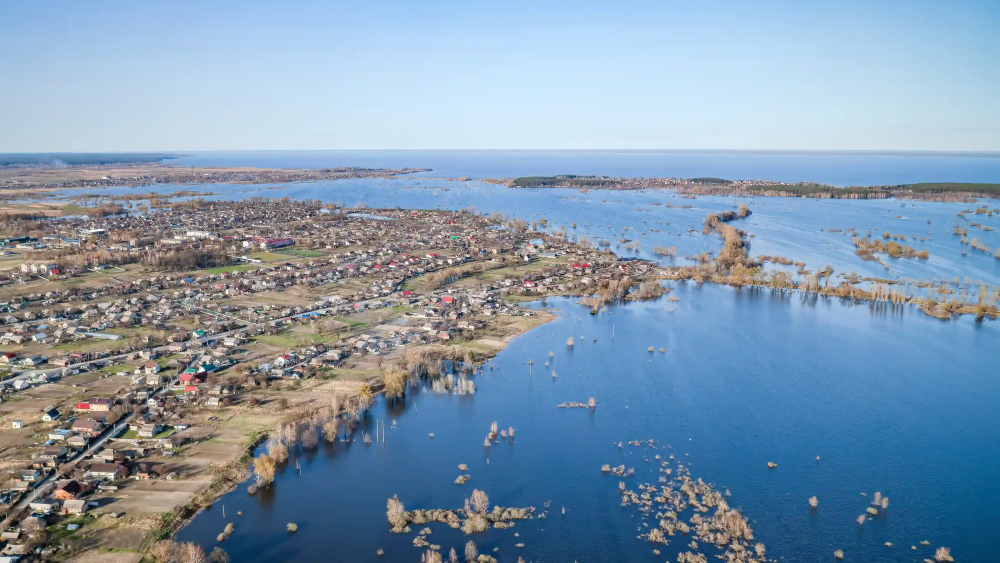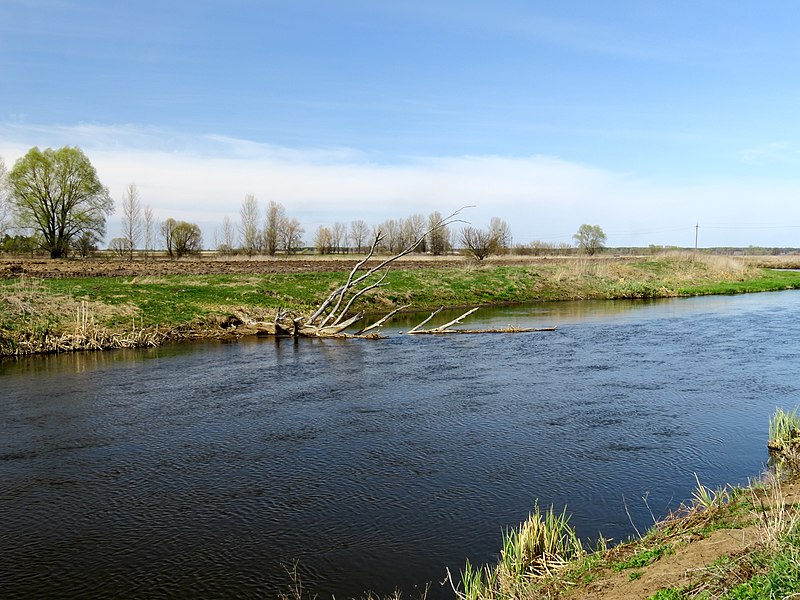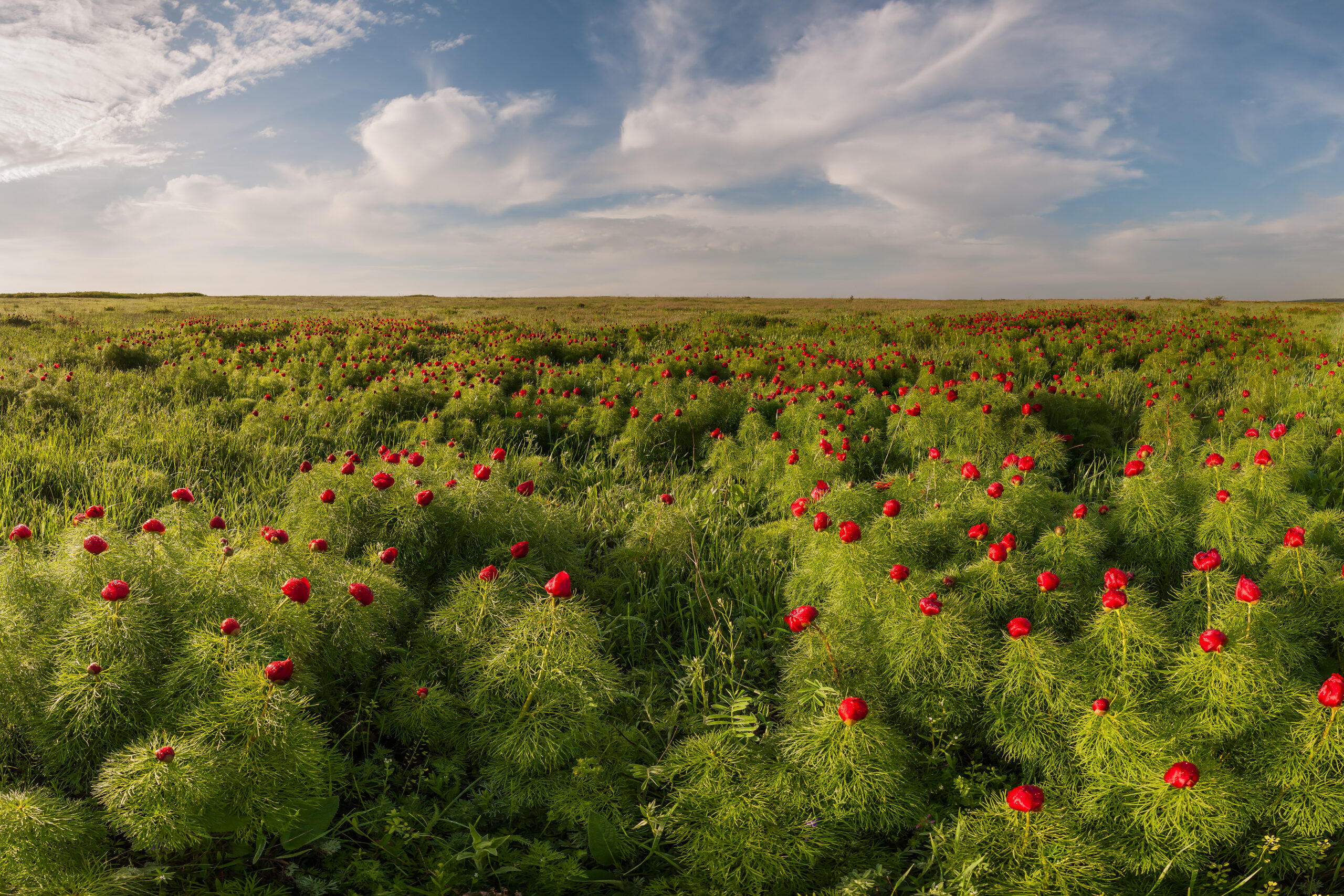Alexei Ovchinnikov
Each month, the UWEC editorial team shares highlights of recent media coverage and analysis of the Ukraine war’s environmental consequences with our readers. As always, we welcome reader feedback, which you can leave by commenting on texts, writing to us (editor@uwecworkgroup.info), or contacting us via social networks.
CEOBS study on the impact of the war on groundwater pollution
Experts from the Conflict and Environment Observatory (CEOBS) have carried out research to determine the probability of groundwater being polluted with heavy metals and toxic elements that may have entered the water as a result of military activity, missile or shell bombardments, or the destruction of infrastructure. The findings allowed CEOBS to map groundwater vulnerability in Ukraine.
For its methodology, CEOBS used an approach developed by the United States Environmental Protection Agency known as DRASTIC (D – Depth to groundwater; R – the possibility of Recharging reserves (net recharge); A – Aquifer media; S – Soil media); T – Topography; I – Impact of vadose (the zone water passes through before reaching aquifers); С – hydraulic Conductivity (how easily water flows through the aquifer rocks)).
Not all the criteria are of equal significance: depth to water and net recharge are the most important. Each category was therefore assigned its own significance coefficient and the pollution risk was assessed in accordance with the criteria. This made it possible to create a summary table of the probability of groundwater pollution in Ukraine. The data used for the study was assembled by CEOBS experts from freely available sources, such as the International Hydrogeological Map of Europe), the European Soil Database and the Ukrainian Hydrometeorological Institute).
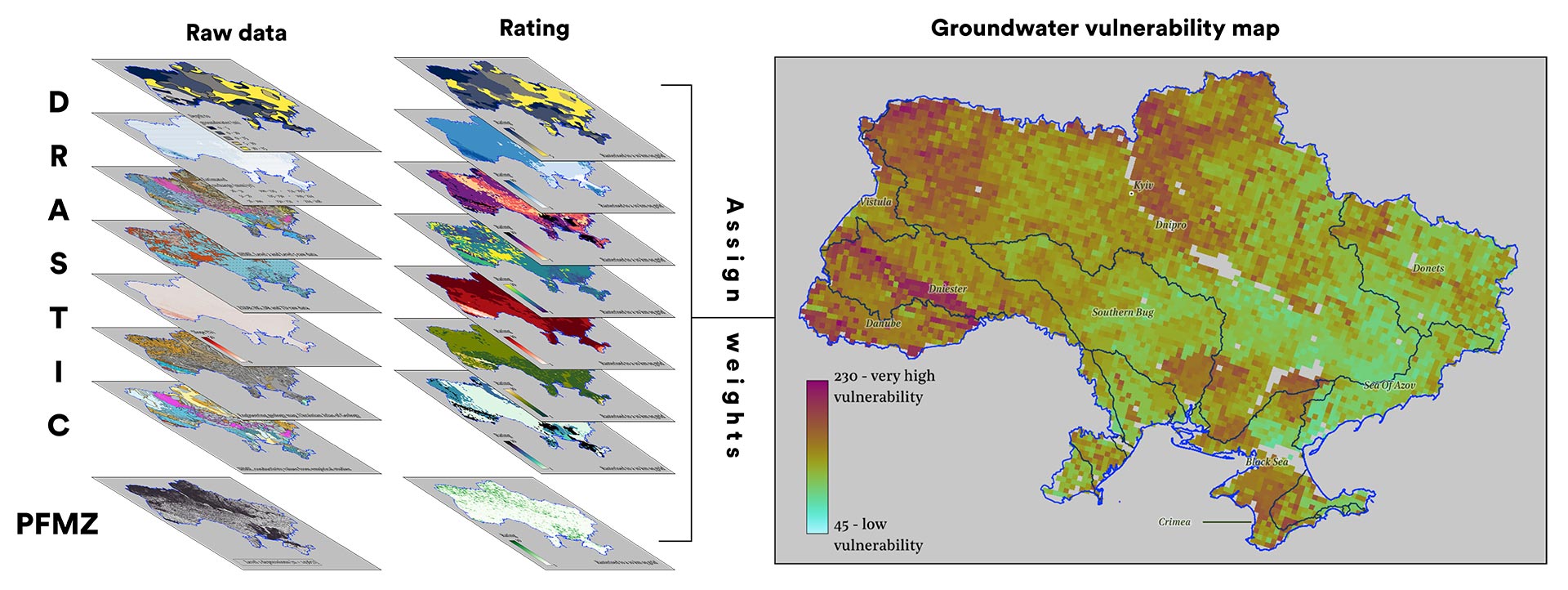
The map showed a high level of vulnerability for groundwater in the region around the upper Dniester River, parts of the Donets basin, the Danube basin and parts of the lower Dnieper basin, where karst landscapes predominate. There is also a high probability of polluted groundwater in the upper reaches of the Dnipro, around Kyiv. High levels of vulnerability in areas of Western Ukraine are also of note. Although these regions are located far from the frontlines, Russian shelling of infrastructure – particularly oil refineries – means they are also subject to the risk of pollution.
Groundwater monitoring in Ukraine is very important today, since the destruction of infrastructure frequently leads to situations in which the inhabitants of both cities and villages are forced to rely upon groundwater for their supply of water. UNICEF has already sponsored the drilling of wells with the aim of supplying hospitals in Odesa and Mykolaiv.
Providing water to communities (hromady) that were previously supplied by the Kakhovka Reservoir remains a serious issue. Although, as the analysis of groundwater pollution carried out by CEOBS shows, in this region the likelihood of pollution is medium. Theoretically this allows wells to be bored to supply the hromady with water without the need to rebuild the reservoir.
You can read about the study and other projects for monitoring the environmental consequences of the war in more detail on the Conflict and Environment Observatory website.
Ukraine ratifies the Rome Statute
On 21 August 2024 Ukraine passed a law “On the ratification of the Rome Statute of the International Criminal Court and amendments to it.” Ratification of the Rome Statute means that Ukraine recognizes the founding treaty of the International Criminal Court in The Hague, which should simplify the review of war crimes committed following Russia’s invasion of Ukraine.
Today the Rome Statute (Article Five) identifies four types of crime that can be considered by the International Criminal Court: genocide, crimes against humanity, war crimes and crimes of aggression. While an active campaign to include ecocide on the list of international crimes is now underway around the world, crimes against nature do not currently have a separate article in the Rome Statute.
Nonetheless, as the Ukrainian organization Environment. People. Law. (EPL) notes, environmental crimes can already be treated as war crimes by the International Criminal Court (Article 8(2)(b)(iv) of the Rome Statute). A war crime is defined as, among others, “intentionally launching an attack in the knowledge that such attack will cause incidental loss of life or injury to civilians or damage to civilian objects or widespread, long-term and severe damage to the natural environment which would be clearly excessive in relation to the concrete and direct overall military advantage anticipated.”
Data is currently being gathered on damage inflicted in Ukraine, and a site containing a register of damage has been developed and launched. A special commission has outlined 12 criteria to be used, distributed across three categories (А-Claims by natural persons, B-Claims by the state of Ukraine, and С-Claims by other legal entities). In accordance with these, those who have suffered as a result of the war can submit an application to receive compensation. This concerns forced internal displacement, the death or disappearance of relatives, and the destruction of both private and public property.
The Ukrainian organization EPL not only distributes information about the possibility of receiving this kind of aid, but has also submitted an application to the secretariat that manages the register through the Ukrainian Ministry of Justice with the aim of including an environmental damage category, B 3.1, to the register.
You can familiarize yourself with the application procedure and learn more about the organization’s work on the EPL website.
Russia is continuing to export oil to Europe, putting the Baltic Sea at risk
A Greenpeace study, carried out with the help of satellite monitoring, has shown that since July 2024 around 15 oil tankers have departed Russian ports in the Baltic and Black Sea, bound for Europe.
After Europe banned the import of Russian oil, Russia stepped up oil exports via sea routes, even though sanctions imposed by the G7 nations prevent Western shipping companies from participating in the export of Russian oil worth more than $60 a barrel, and insurance companies are prohibited from insuring the transportation of such cargo. In order to circumvent sanctions, therefore, Russia is using a so-called “shadow fleet” – tankers insured or registered in third countries. These ships are often old and in poor condition, which increases the risk of an accident.
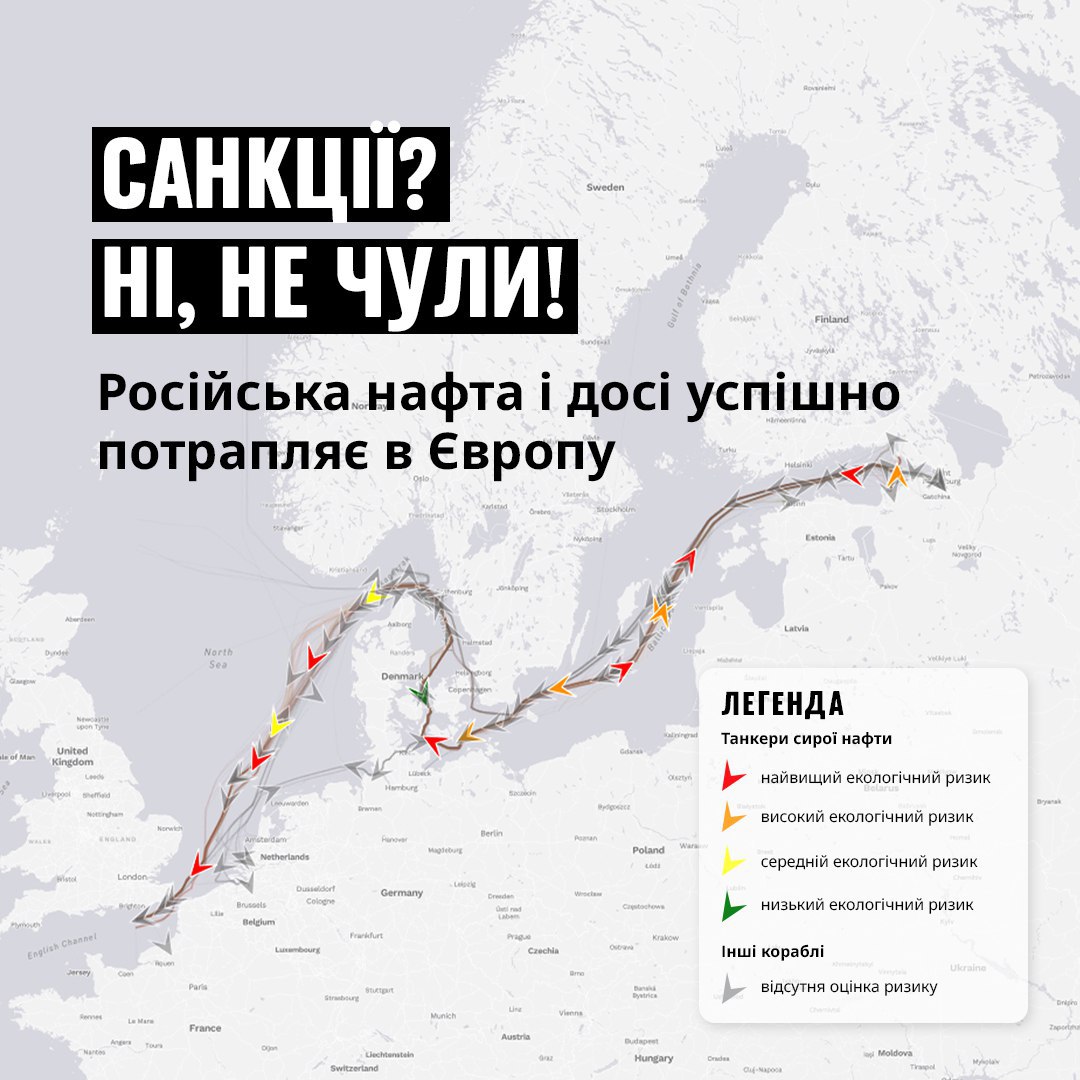
The Baltic Sea is at particular risk today. As Greenpeace notes in its study, last year around 1,000 tankers (roughly two-three daily) carrying Russian oil passed along the German coast. Since January 2021 the total number of such voyages has increased by 70%.
This all represents a threat to the environment in the Baltic Sea, increasing the likelihood of a catastrophe and an oil spill. A good example of the condition of the ships involved in this practice is the cargo vessel Rubin, which was identified moving around aimlessly for several days off the coast of Norway. The ship was carrying 20,000 tons of ammonium nitrate and European ports refused to accept the vessel for a long time. In the end, the authorities in Malta agreed to let the Rubin into port there.
Greenpeace is calling upon European countries to closely monitor the situation, identify the ships that make up the shadow fleet, and determine whether their owners are engaged in trading Russian oil. In the event that proof of such precedents emerges, immediate sanctions will be introduced.
On 10 September, Greenpeace–Central and Eastern Europe opened an office in Kyiv. The organization has been involved in analyzing the environmental consequences of the war in Ukraine for a long time already: it conducted research into the impact of the invasion on the Chernobyl zone, as well as the situation with the Zaporizhzhia nuclear power plant, and also developed a monitoring project in the form of an interactive map. The opening of the Kyiv office will also allow the organization to become more actively involved in the process of rebuilding Ukraine sustainably.
Read more about the effectiveness of sanctions: Are sanctions against Russia working and if not, why not?
Ukrainian municipalities to work with European cities on climate neutrality
The SUN4Ukraine initiative, which is part of the EU Climate-Neutral and Smart Cities Mission, is inviting Ukrainian municipalities and communities to become leaders in sustainable and climate-neutral development, not only in Ukraine but in Europe as a whole.
As part of the project, ten flagship municipalities will be selected to receive expert support on sustainable development from SUN4Ukraine. They will work in tandem with European partner cities and begin to develop and implement strategies to achieve climate neutrality by 2050, serving as examples for other Ukrainian cities. The project will also run an educational program on climate-neutral cities in other municipalities. Applications to participate can be submitted until 20 October this year.
The way in which urban infrastructure damaged by the war in Ukraine is rebuilt will have a significant bearing on the overall course of the country’s development. Like other environmental organizations, UWEC Work Group expects cities to choose environmental and climate-neutral paths toward development and restoration. In this regard, Europe’s experience can be of assistance to municipalities and communities in Ukraine.
Translated by Alastair Gill
Main image: The damaged Irpin dam and the flooded landscape around the village of Demydiv located north to Kyiv, in late February 2022. Сredit: Vincent Mundy

